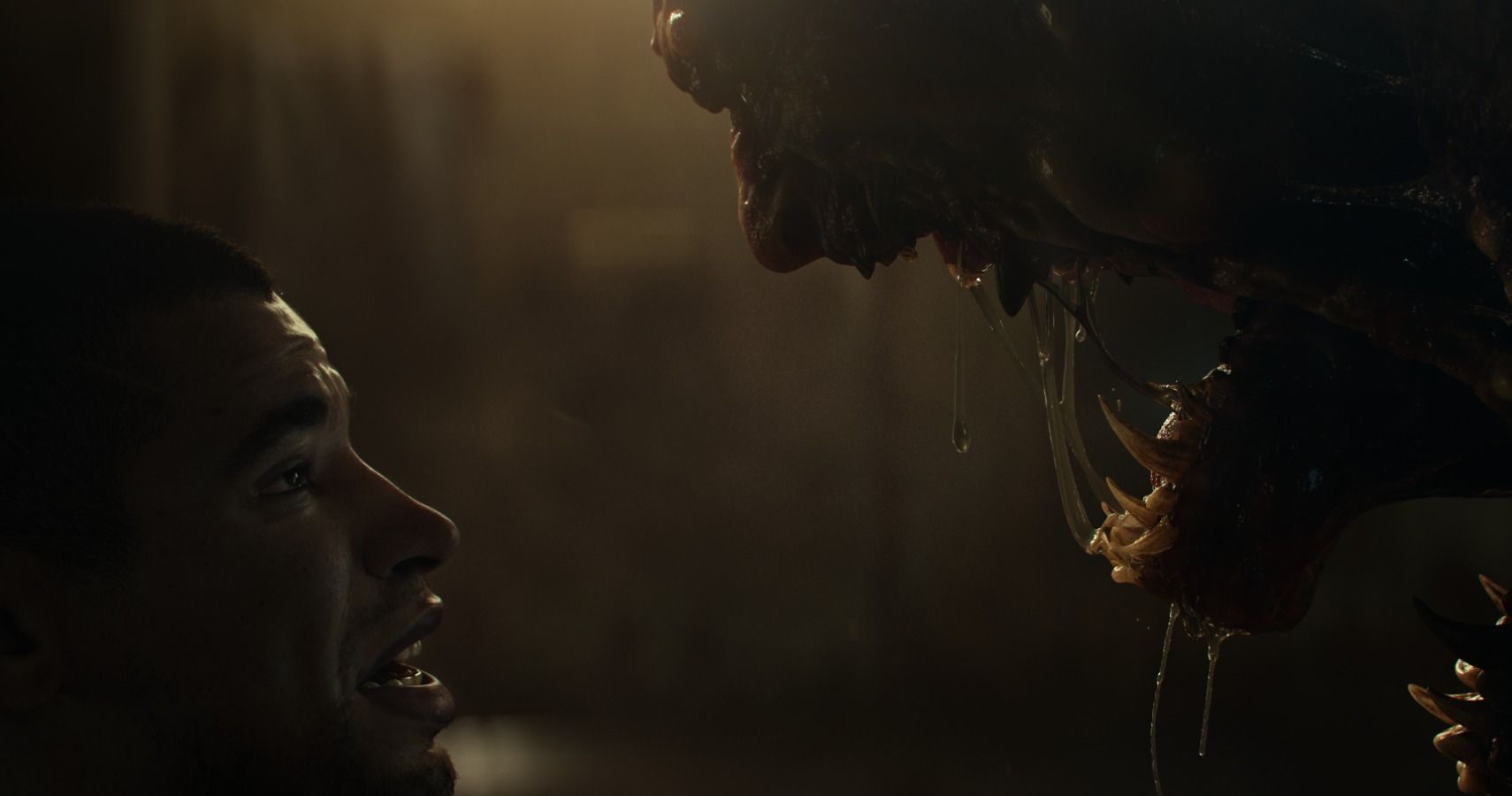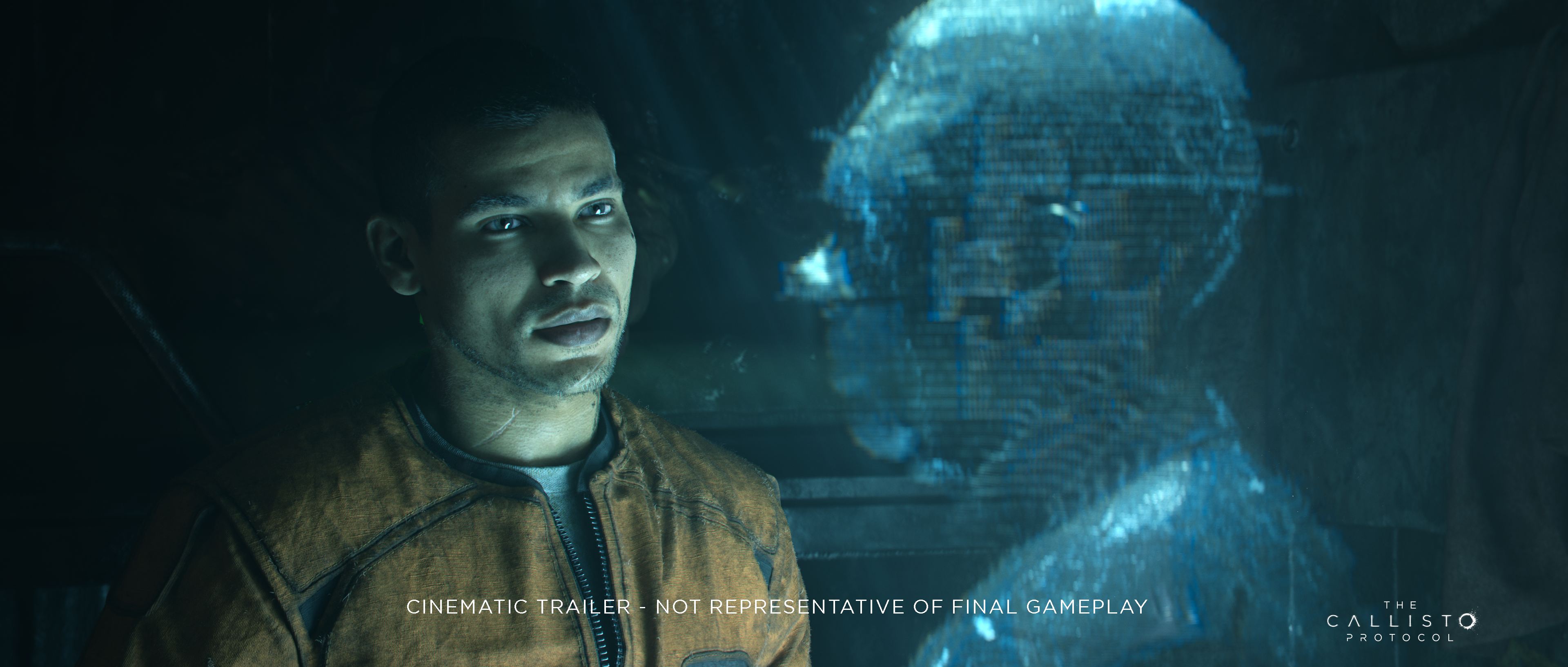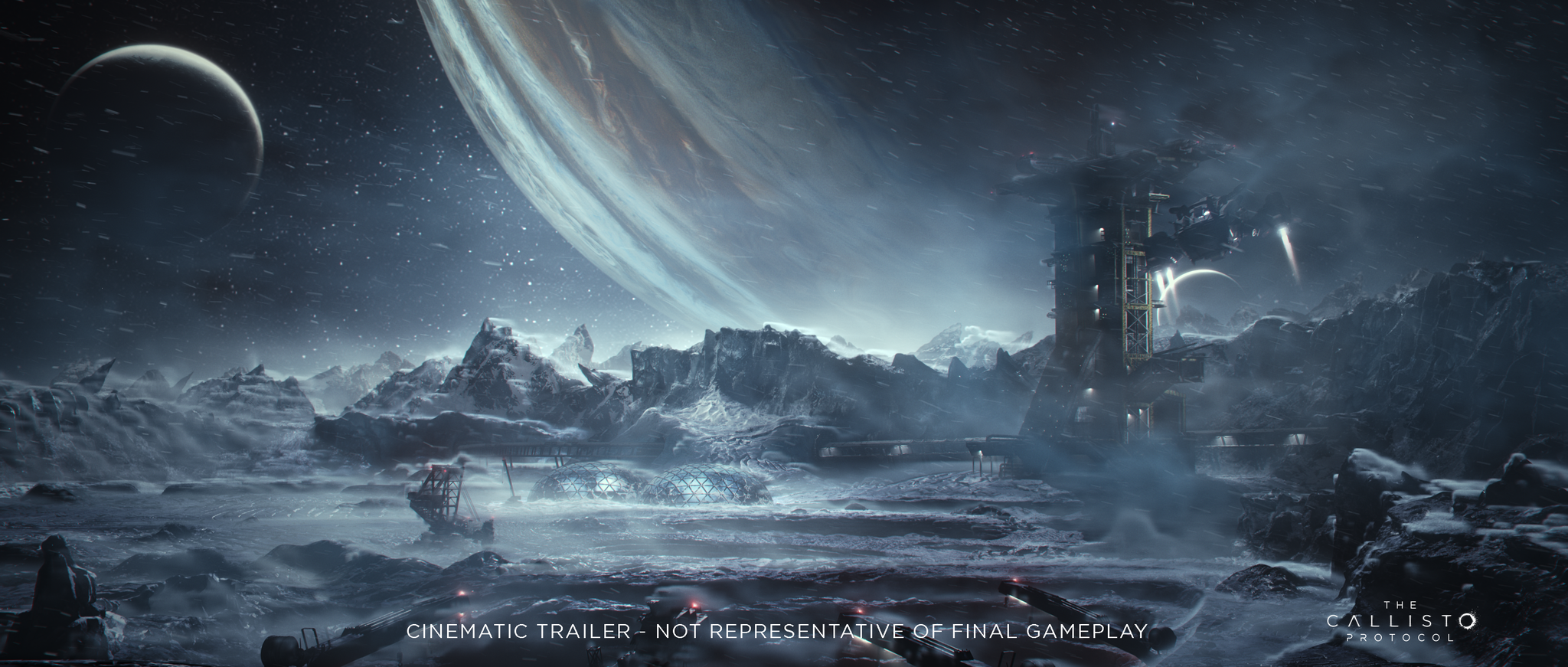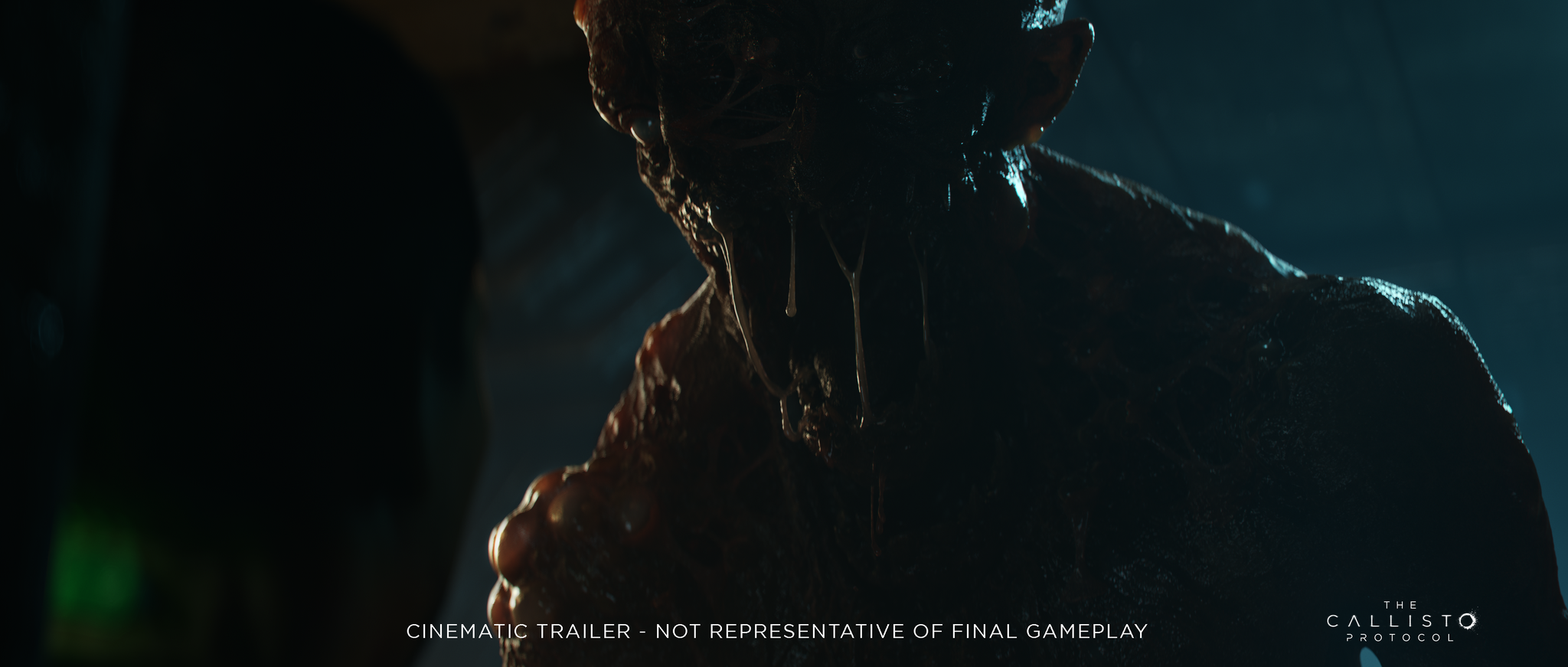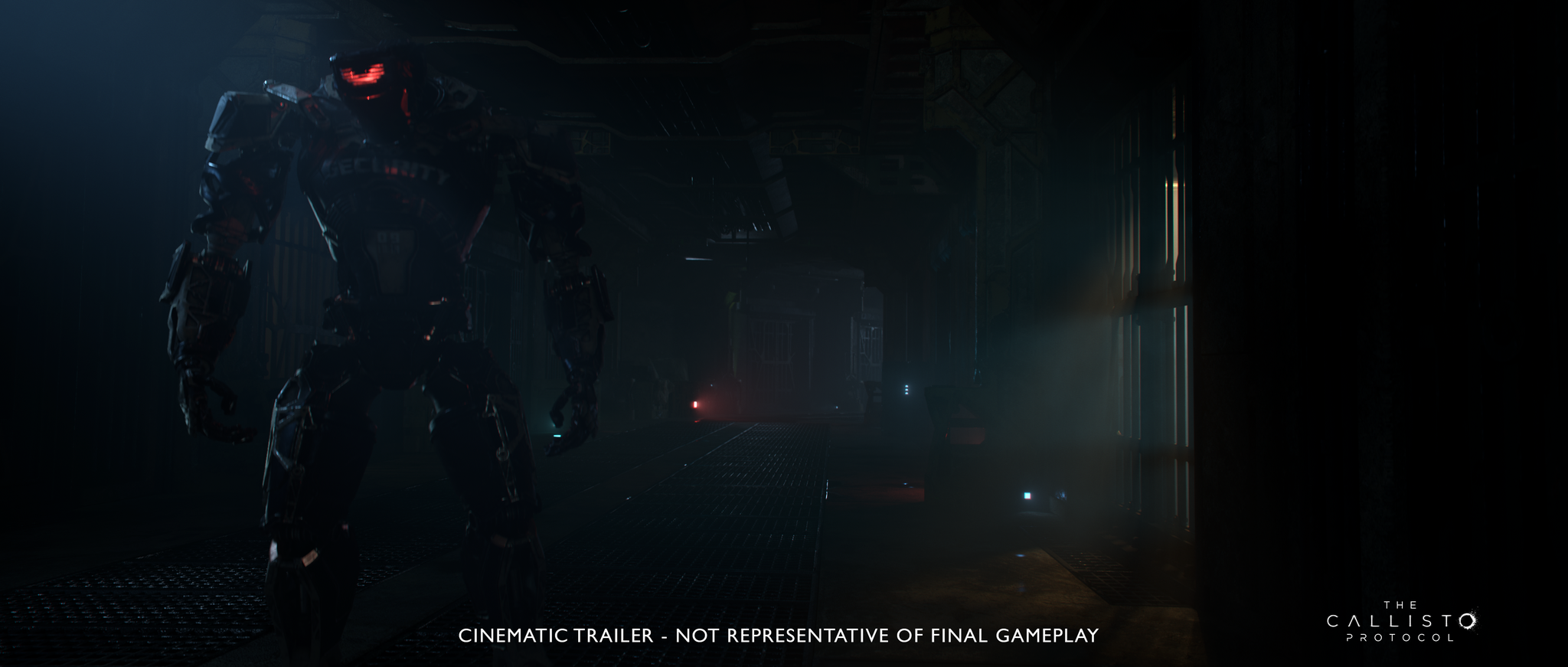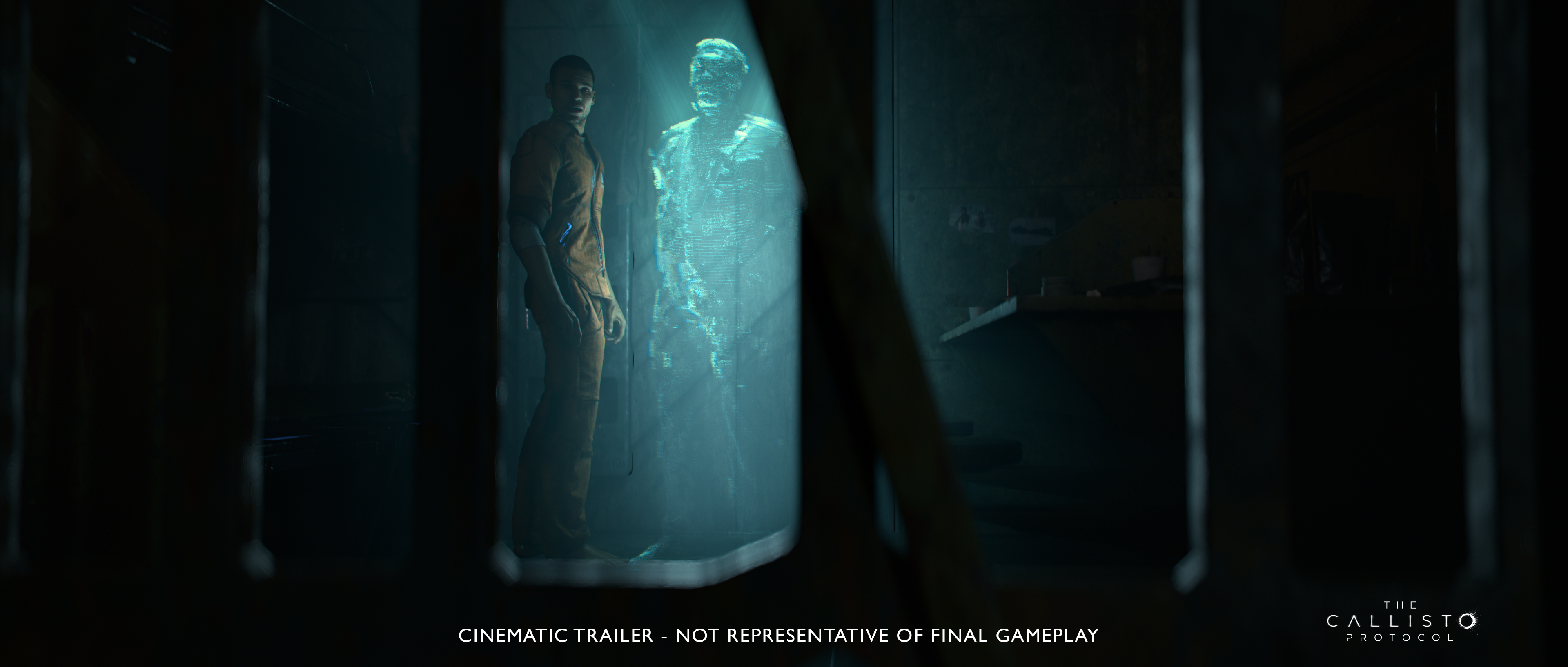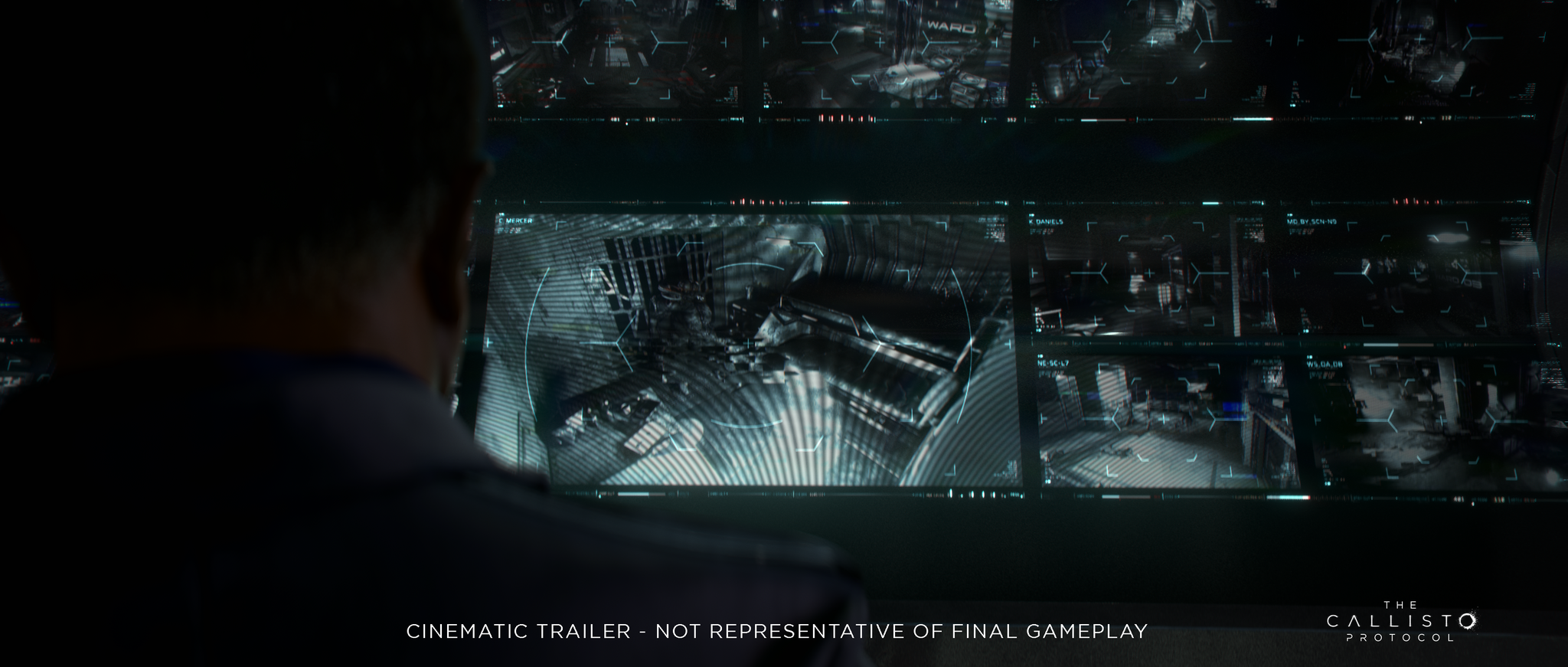The Callisto Protocol is a curiosity. It’s being developed by a stacked team of industry veterans, several of whom conceived and worked on the illustrious Dead Space franchise. Callisto appears to be a spiritual sequel of sorts, albeit one set on a galactic prison 300 years in the future of the PUBG universe - yes, the multiplayer game where people parachute onto islands to pick up guns and shoot each other - which not only murkies the waters, but freezes them until they are opaque and impenetrable.
I recently sat down for a chat with Striking Distance Studios chief development officer Steve Papoutsis, who formerly served as executive producer on Dead Space. Before we move on to Callisto, he asks how I’m doing. “It’s been a crazy year,” he says, which is something we can all certainly agree on. But Papoutsis is excited, too - work on Callisto appears to be going well, and Striking Distance is eager to strut its stuff with its blockbuster debut effort.
That doesn’t mean the studio has had it easy. After working in temporary offices for around a year, Striking Distance finally managed to move into its own building. Two weeks later, a global pandemic would render that building completely inaccessible.
“We were in a little temporary spot and while that was going on we were building our home, a studio that had a motion capture stage and all the things we needed to do our work,” Papoutsis says. “We were there for two weeks and then it was just, ‘Nope, gotta go.’” All of the developers have since been working from home for 39 weeks and counting. The game is a good two years from release.
Fortunately, a work-from-home option was endemic to the idea of Striking Distance in the first place, a studio composed of incredibly experienced developers with “13 or 14 years of experience on average.” It was always going to opt for the Supergiant model, where you can work from home one day a week to facilitate spending time with your family or pursuing your own personal interests. And so, when the pandemic forced the devs out of their offices, the transition was relatively smooth - they grabbed their gear and kept up the momentum on Callisto.
“It’s very different,” Papoutsis says. “In the studio we’re all together. You can meet somebody in the kitchen and have a chat about something in the game and what they’re working on. And everybody else can too, so it’s a little bit easier to understand what’s going on around you. But now that we’re just seeing this view that you and I are seeing, that’s just our screen… alignment in very specific directions is really required to make sure we stay on the same page.”
The studio is lucky in this respect, in that a lot of the devs have already tackled survival horror in space together. Boasting heaps of ex-Dead Space talent, Striking Distance has a singular and cohesive vision for how it wants this spiritual successor to shape up.
According to Papoutsis, The Callisto Protocol is a single-player, story-driven survival horror game set on Jupiter’s dead moon (which is called Callisto). The events of the game transpire at Black Iron Prison, a maximum security galactic incarceration facility that, judging by the trailer, is home to malevolent robots and monsters with far too many teeth. The aesthetic makes its Dead Space roots startlingly clear, which is something Papoutsis acknowledges in our chat - Striking Distance is planning on collectively drawing from the best bits of all of its developers’ past experiences, which it hopes will manifest in something new, engaging, and genuinely unique.
“Without getting into features for The Callisto Protocol, I would say that every game we get a chance to work on, there’s always something that you can’t fit,” Papoutsis says, referring to the idea of old Dead Space ideas reappearing here. “Whether it’s time constraints, budget, or maybe the idea you thought was really good, but when you try to implement it and it doesn’t work out the way you need it to work out... I think every time, any game we work on, there’s always a chance to resuscitate an old idea and see if it’s good. Honestly, for something like The Callisto Protocol, it’s really exciting to have that canvas outline of ‘story-driven, third-person, survival horror game set in space in a prison’. Your mind goes bonkers with all the possibilities of the things you can do that feed into the themes of the location.”
Location is obviously of utmost importance here, given that the minds behind Dead Space - some of whom spent over a decade apart - have decided to return to the stars.
But why space? And why now?
“Many of us are just fans of science fiction,” Papoutsis explains. “It’s the ability to have a chance to do stuff that maybe we couldn’t do in our current time. It opens up a chest of opportunities to play around with - but then science fiction is also [about how] we want to know what’s out there. Those things just feed right into the idea of the survival horror experience, the potential of what could be there.
“At a very high level it comes back to the premise, the setting, the theme - when you see an image what does that convey, what does it conjure? The mind is super powerful. As soon as you see that image, you start imagining what it could be, and I think that’s really what pulls people in initially and gets them to engage. All those other things are just icing on the cake - if you have unique standout features then it just gets better and better. But ultimately, I know for myself that I have to be interested in the setting, the protagonist, and what is going on.”
This is where things get more interesting. The Dead Space franchise is renowned for its excellent evocations of fear, horror, and despair. But at the same time, it featured a riveting story and compelling characters, which meant that even its most intense moments of fear were subsidized by quieter sections of sorrow and introspection.
“I personally find things more scary when I can envision it happening to me,” Papoutsis says. “I think with horror you need to pack those moments in the setting to really trigger certain emotions. A lot of what horror is about is the setup and creating a moment and then maybe not doing something. Games can be equally scary when they’re not doing anything as when you have a monster jump out. These moments are extremely nuanced - whether it’s lighting, effects, design, engineering, art, all [of those] have to contribute to pull off the exact timing and mood. For a particular area, if any piece is out of sequence - if a light goes on too soon, if a sound doesn’t trigger at the right time - that will fail to deliver on what it’s trying to do.
“I think it starts with a setting - and things that are relatable in that setting - to really get a player to want to connect. Once a player can connect with the world, then they’re more susceptible to being scared and allowing those things to happen, versus maybe watching a slasher movie and you’re like, ‘Don’t open the door, I know what’s going to happen.’ I think what’s wonderful about video games is that we get a chance to put a player into the world and actually have an interactive experience that connects art, design, and technology, and you get that intersection where those three things work well together. Then you have something that’s memorable.”
Speaking of memorable, how about that tentacle grab from Dead Space, eh? Sure enough, my next question immediately after Papoutsis’ response pertained to exactly that - can we expect any of Dead Space’s most confronting moments to have an impact on Callisto?
“[The tentacle arm] was really fun,” Papoutsis says. “I think we could definitely revisit something like that. That’s one of the things we really focus on at Striking Distance - we’re a very collaborative team. So if somebody came up with an idea like that and it was the best idea for an enemy or moment, we would definitely do it because at the end of the day we want to make the best experience possible. We have a lot of different ideas, a lot of things are suggested. We go through a process of weighing those things out and determining if we want to try it or not. With the example you gave, that was clearly one of those ideas that we went for and it worked out.”
But to tie it back to the previous point, sometimes things are scariest when something doesn’t happen. It doesn’t need to be balls to the tentacle at all times - stories like these are best told with emotional peaks and valleys, gradually navigated through over the course of the entire narrative.
“We’re also allowing players to have moments to breathe so you can experience those extremes,” Papoutsis says. “If you stay at one level the whole time, that range I’m talking about is missing. Some people will say, ‘OK, that game just does one thing and is focused on that.’ If you have a more varied set of pacing and that emotional sine wave, it actually feels better because now you’re looking forward to those moments where it’s back to the tension, or it’s a furious, epic moment.
“The most immersive, best games for me are ones that feel cohesive,” Papoutsis adds. “Everything in the world works together - it all fits, it’s seamless. Whether it’s storytelling or set dressing, that whole aspect of individual storytelling and production design is so important. All of my favourite games tend to have that, where you don’t have that one thing that just sticks out in the story and I’m like, ‘What’s that doing in there?’ I generally don’t see that in the games that really stick with me.”
All of the above being said, Callisto and Dead Space appear to have more in common with one another than simply being set in space. If you pay close attention to the trailer, you’ll see that the prisoner has a green device embedded in the nape of his neck, which looks aesthetically similar to the diegetic UI that Dead Space is famous for.
“That’s a good observation,” Papoutsis says when I ask if this is the case. “I think that’s for us envisioning what may be something you can see in the future, a device that can give you information about a character. The fact [it could be a diegetic device] is cool, too. Ultimately, what I would say is we’ve got a lot of folks who worked on the Dead Space franchise and took a lot of pleasure in that, so we’re going to continue to leverage what I hope were the good ideas from past experiences, whether it’s from that franchise or any other games that we worked on. We’re going to cherry-pick and make sure we’re learning from what we’ve done in the past to create the best game possible.”
I also wanted to ask Papoutsis about one of the most interesting and frankly shocking things about this game: it’s set in the PUBG universe. Sure, it’s on one of Jupiter’s moons in 2320 - but what does that mean for PUBG? Conversely, how does that influence the development of Callisto?
“This particular game takes place about 300 years in the future of the PUBG universe,” Papoutsis says. “One of the things that’s really cool is that we’re in a position whereby we can contribute to the overall lore and experience of that universe. We’re really enjoying working with everybody at PUBG - they’re really passionate about their game.”
Papoutsis notes that the team has been afforded as much creative freedom as it wants on this project, meaning that the ties to PUBG aren’t constraints. “The benefit is thinking about the connective tissue which could potentially be something that folks play around with,” he explains.
When I ask if we should expect to see references to PUBG as we know it in Callisto - similar guns, audio logs from 300 years prior, and so on - Papoutsis says those are good ideas and he should write them down. For now, however, we’ve got no confirmation on how clear and apparent the link between the two games will be - as well as whether or not we can expect other studios to start contributing to the PUBG universe.
I think the most striking thing about Striking Distance is emphatically its team. The devs mostly have over a decade of experience, and are immensely passionate about their job. Papoutsis tells me several times about how fortunate he feels to be in this position, where he can create experiences like Dead Space and Callisto.
“These games take many years to put together,” Papoutsis says. “Each time you set out to make a game there are new people in the mix, new ideas, and I think what’s important is to really appreciate that experience and enjoy the ride. You can learn from previous things you’ve done, and you should - the good and the bad things - but if you want to make a great game you need to be focused on the people you’re making it with.
“For me, one of my favourite things about doing this is just that interaction with people, that creative process, even though right now with COVID we’re not all sitting together,” he says. “That feeling of working together on something and having a vision that everybody is trying to execute is awesome. I try to focus on that and make that the centrepiece, and not allow other things to interfere. Not everybody on this project worked on the other game we’re talking about. Some of them did - I did - [and] I’m very happy to have worked on every Dead Space thing ever. But in order for The Callisto Protocol to be the best it can be, we need to appreciate this moment while we’re building it and make that as memorable as the other projects.
“We’re very fortunate to work on things that hopefully bring enjoyment to people. We’re really trying to challenge and push ourselves to deliver an extremely compelling narrative-driven experience that terrifies players. That’s our mission as we push forward with this game.”

